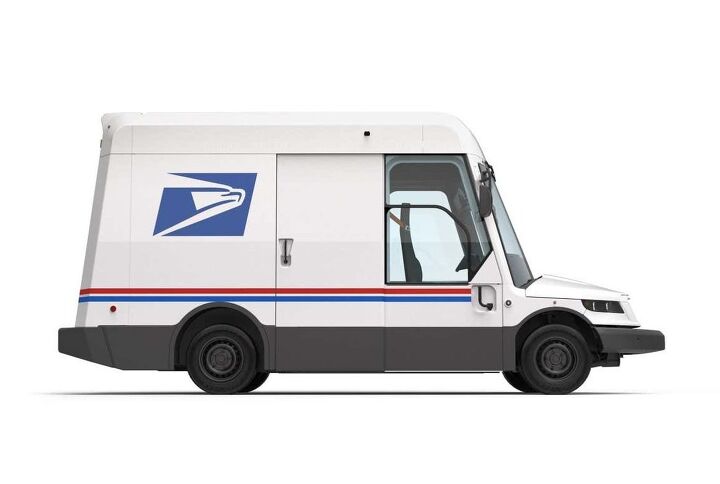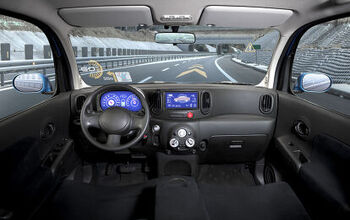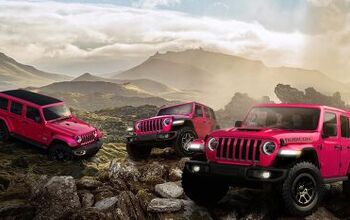Mail's Here: USPS Picks Oshkosh Defense NGDV

The United States Postal Service (USPS) has revealed its new mail truck after a 6-year competition, selecting the duck-billed option from Wisconsin-based defense contractor Oshkosh. Its Next Generation Delivery Vehicle (NGDV) will officially replace the Grumman Long Life Vehicle (LLV) starting in 2023. Though the LLV spent the last 20 years being gradually supplanted by anything large enough to haul a bag of mail, it’s technically the last vehicle commissioned for use by the USPS.
Sadly, the postal service’s decision also represents a major loss for Ohio-based Workhorse. Its battery electric W-15 seemed to represent the government’s greener ambitions and was capable of 80-mile journeys before a gasoline-powered range extender kicks on. While a smart design, we think the manufacturer would have been better served by having ties to the military, like Oshkosh and Grumman. Workhorse’s share price has been falling ever since news broke that the USPS wouldn’t be needing its services, however analysts are under the impression that it will eventually rebound.
From the USPS:
Under the contract’s initial $482 million investment, Oshkosh Defense will finalize the production design of the Next Generation Delivery Vehicle (NGDV) — a purpose-built, right-hand-drive vehicle for mail and package delivery — and will assemble 50,000 to 165,000 of them over 10 years. The vehicles will be equipped with either fuel-efficient internal combustion engines or battery electric powertrains and can be retrofitted to keep pace with advances in electric vehicle technologies. The initial investment includes plant tooling and build-out for the U.S. manufacturing facility where final vehicle assembly will occur.
The contract is the first part of a multi-billion-dollar 10-year effort to replace the Postal Service’s delivery vehicle fleet, one of the world’s largest. The Postal Service fleet has more than 230,000 vehicles in every class, including both purpose-built and commercial-off-the-shelf (COTS) vehicles. Approximately 190,000 deliver mail six, and often seven, days a week in every U.S. community. The NGDV, along with other COTS vehicles, will replace and expand the current delivery fleet, which includes many vehicles that have been in service for 30 years.
Despite looking a little goofy, the NGDV is designed in a way that maximizes interior volume and outward visibility for drivers who will be required to move against traffic in pedestrian-heavy areas in order to make deliveries. It was also tall enough for a postal worker to stand inside while organizing parcels. Those aspects were shared by most of the concepts vying for the USPS contract. But a lot of them also possessed some form of electrification, which the NGDV doesn’t appear to prioritize.
Instead, Oshkosh plans on running with low-emission, internal-combustion engines with a plan to add battery power later on. Apparently the platform makes retrofitting incredibly easy, even if that sounds exactly like something a company seeking government contracts would say. USPS head Louis DeJoy stated that something like 10 percent of the first order from Oshkosh would possess any electrification, suggesting that it would take another $3-$4 billion dollars to go battery-electric. Frankly, we weren’t positive that electric mail trucks would be a good fit for rural communities anyway, so it might be better to wait for the technology to mature a bit.
The NGDV has a few questionable design choices that likely reduce production costs but don’t seem particularly safe. Its singular, low-mounted reverse light feels a bit low rent and we might say the same about the turn signals. We imagine those will be improved after enough people complain. But some of the assumed risk will be offset by the vehicle’s 360-degree camera, automatic emergency braking, and collision avoidance systems.
While we like the old Grumman boxes, they’re long past retirement. The USPS is already operating a fleet of over 100,000 long past their two-decade best-by date, and they lack creature comforts like air conditioning. If that doesn’t bother you and you’re in the market for a cheap, no-frills beater with loads of character, they’re bound to start appearing in government auctions the minute Oshkosh starts rolling out their replacements.
“Our century-long history of delivering products to customers, operating in some of the most demanding and severe conditions on the planet, uniquely positions us to bring exceptional reliability, safety, and maintainability to USPS’s Next Generation Delivery Vehicles,” John Bryant, Executive Vice President, Oshkosh Corporation, and President, Oshkosh Defense, said in a statement. “Partnering with trusted suppliers, we have developed a purpose-built solution to support the current and future needs of the USPS.”
[Image: Oshkosh]

A staunch consumer advocate tracking industry trends and regulation. Before joining TTAC, Matt spent a decade working for marketing and research firms based in NYC. Clients included several of the world’s largest automakers, global tire brands, and aftermarket part suppliers. Dissatisfied with the corporate world and resentful of having to wear suits everyday, he pivoted to writing about cars. Since then, that man has become an ardent supporter of the right-to-repair movement, been interviewed on the auto industry by national radio broadcasts, driven more rental cars than anyone ever should, participated in amateur rallying events, and received the requisite minimum training as sanctioned by the SCCA. Handy with a wrench, Matt grew up surrounded by Detroit auto workers and managed to get a pizza delivery job before he was legally eligible. He later found himself driving box trucks through Manhattan, guaranteeing future sympathy for actual truckers. He continues to conduct research pertaining to the automotive sector as an independent contractor and has since moved back to his native Michigan, closer to where the cars are born. A contrarian, Matt claims to prefer understeer — stating that front and all-wheel drive vehicles cater best to his driving style.
More by Matt Posky
Latest Car Reviews
Read moreLatest Product Reviews
Read moreRecent Comments
- Corey Lewis It's not competitive against others in the class, as my review discussed. https://www.thetruthaboutcars.com/cars/chevrolet/rental-review-the-2023-chevrolet-malibu-last-domestic-midsize-standing-44502760
- Turbo Is Black Magic My wife had one of these back in 06, did a ton of work to it… supercharger, full exhaust, full suspension.. it was a blast to drive even though it was still hilariously slow. Great for drive in nights, open the hatch fold the seats flat and just relax.Also this thing is a great example of how far we have come in crash safety even since just 2005… go look at these old crash tests now and I cringe at what a modern electric tank would do to this thing.
- MaintenanceCosts Whenever the topic of the xB comes up…Me: "The style is fun. The combination of the box shape and the aggressive detailing is very JDM."Wife: "Those are ghetto."Me: "They're smaller than a Corolla outside and have the space of a RAV4 inside."Wife: "Those are ghetto."Me: "They're kind of fun to drive with a stick."Wife: "Those are ghetto."It's one of a few cars (including its fellow box, the Ford Flex) on which we will just never see eye to eye.
- Oberkanone The alternative is a more expensive SUV. Yes, it will be missed.
- Ajla I did like this one.




































Comments
Join the conversation
"Its singular, low-mounted reverse light feels a bit low rent ..." Stupidest cost cutting ever. I've had two vehicles with that "feature", a 2009 MINI (really, for what you guys charge we only get one backup light?), and my 2008 xB. I believe the 08s are the only year with one, props to Toyota for rectifying that idiocy. I just put an LED in mine and the difference is, well, night and day.
Hopefully, this goofy-looking thing will find a way to deliver the mail faster than what is currently occurring.